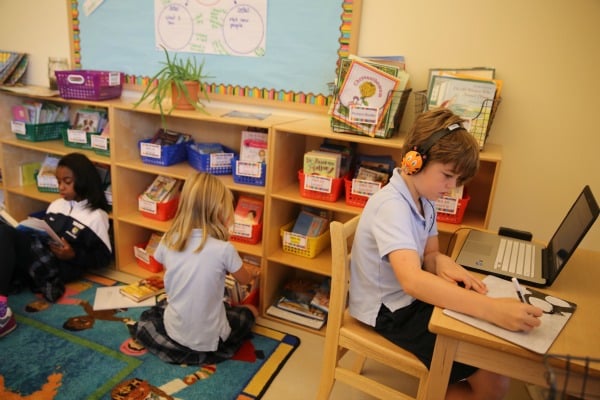When you have a school-aged child, of course you want your student to have all the tools he or she needs for academic success. Unfortunately the "one size fits all" teaching approach is flawed because it assumes all students learn in the same ways.
Curriculums should be differentiated to suit the individual needs of each unique student. Only then can students receive the best possible education and be prepared for future success.
Why Does Differentiated Learning Matter?
In many schools it is common for a student's day to largely consist of sitting at a desk, listening to a teacher lecture, and taking notes in preparation for an exam or quiz. However, when we take into consideration that not all students learn effectively with this method, it becomes clear that what we really need in more classrooms across the United States is student centered or differentiated learning.
Research finds that students immersed in student centered classrooms are more engaged and achieve more than students in traditional classrooms. In other words, a differentiated learning approach is more likely to reach students than the traditional one-size-fits-all lecture.
Understanding Common Learning Styles
When we mention that all students have unique learning styles, what exactly do we mean? Educators have agreed upon the existence of seven primary learning styles that includes most students. Some may fall into more than one. These common learning styles include:
- Aural - prefer using sound and music to learn
- Verbal - learn best through speech and writing
- Physical - do best using a "hands-on" approach
- Visual - prefer learning using pictures and images
- Logical - learn best through reasoning (tend to do well in math)
- Solitary - do best through self-paced studying
- Social - like to learn in groups with others
Of those seven learning styles, only verbal learners are well-served by the traditional style of education where the teacher stands at the front of the classroom and explains concepts to students. This leaves out the overwhelming majority of learners who do best with hands-on learning, group work, or learning through images and sound.

How does differentiated learning better serve students?
Differentiated learning refers to a style of teaching that allows students to work more independently in the classroom and construct lessons based on their own learning styles. In other words, this style of teaching gives students the power to tailor their learning experiences in a way that best suits their unique needs.
Let’s think about elementary school math, for example. Explaining how simple addition works or even demonstrating it on the whiteboard may only resonate with certain students. In reality, social learners may learn best by working in groups that can solve problems together. A set of blocks could help physical learners visualize a mathematical concept. And solitary learners could learn best by taking practice worksheets into a quiet corner.
Creating a Differentiated Learning Environment
Many schools default to the traditional one-size-fits-all educational approach because of resources. Creating a lesson plan tailored to every single learning style is not as simple as writing a lecture or creating a PowerPoint.
When there’s only one teacher in each classroom, it’s challenging to make sure each student gets the attention they need. The teacher can’t help struggling students or challenge thriving ones because they constantly have to make sure the entire class is occupied.
One of the ways we’ve addressed this at Whitby is with multiple teachers in the Lower School classrooms. Our teachers also make sure to allocate time periods to independent work so students can find a comfortable place in the room to work and choose how they approach a project based on their own strengths. Teachers are then able to float around to help as each student works at their own pace.
Creating Education for Students
By creating an environment that allows students to take control of their own learning, we also give them the tools and support they need to be successful in academia, and in life. We're proud to offer a differentiated learning approach for all of our students at Whitby. Our highly trained and experienced educators know how to foster an engaging learning environment that encourages the various learning styles rather than expecting everyone to fit into an ideal "mold" of how students should learn.


